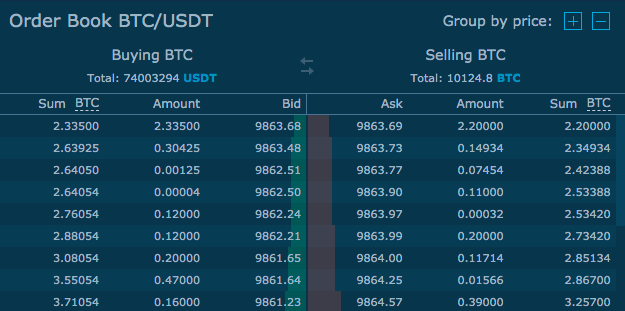Bills of Exchange, Cheque, Promissory Note Comparison Definition, Features, Characteristics, Distinction between
Contents:


This is an individual who receives payment, and in most circumstances, is the same as the drawer. In a promissory note, the maker cannot pay to himself. In the case of bill of exchange, the drawer and the payee may be one person. Stamping is necessary for a bill of exchange except for “bills payable on demand”.
The dishonour of a negotiable instrument entitles the holder/payee to bring a suit for the recovery of money. An indorser of a negotiable instrument who has indorsed and delivered the same before maturity is bound to compensate the subsequent holder in case of dishonor by the drawee, acceptor or maker. In case the instrument has been negotiated multiple times, the indorser is laible to every subsequent holder. Some of these instruments are negotiable by indorsement but they do not confer a better title on the transferee than what the transferor has, thus they are called quasi-negotiable instruments. The transferee of a negotiable instrument gets the right to sue in his own name.
Stamping is necessary for promissory notes without any exceptions. Using our easy-to-follow step-by-step templates, you can create documents and forms in just minutes. Section 13 of the Negotiable instruments Act recognises promissory notes, bills of exchange, and cheques as negotiable instruments. However, it does not exclude the possibility of other negotiable instruments. Hundis, share warrants, dividend warrants, circular notes, bearer debentures, etc., are examples of a few such instruments recognised by usage or custom. A promissory note is an instrument in writing containing an unconditional undertaking, signed by the maker, to pay a certain sum of money only to, or to the order of, a certain person.
It can be paid on demand or after a set length of time. Payable ‘on demand’ meaning that it can be paid right away or at any moment until it becomes time-barred. A demand promissory note becomes time barred three years after the date it bears has passed. Bill of exchange provides the date on which the payment is to be made and also provides a grace period of three days. In case of its dishonour, due notice has to be given by the holder to the drawer. It should be payable to a bearer or to the order of a specific person.
Some Examples of Bills of Exchange
The person who is in possession of the negotiable instrument is considered to have the right to title over such instrument. Negotiable instruments can be transferred without any formality. A bearer instrument is transferred just by delivering it to the transferee, whereas an order instrument needs to be endorsed and delivered for transferring the instrument. The transferee of the negotiable instrument is known as ‘holder in due course’ as described in Section 9 of the Act. A bona fide transferee of value is not affected by any defect of title on the part of the transferor or any of the previous holders of the instrument.
It is sometimes stated that the limitations to be read should be in the nature of confining the definition to documents analogous to bills of exchange and hundis. If so, it would be better to confine the section by suitably changing the wording in that manner. A Promissory note and Bill of Exchange are two negotiable instruments recognised under the Negotiable Instruments Act, 1881.
VIDEO The future of trade: NFTs and a metaverse economy – Trade Finance Global
VIDEO The future of trade: NFTs and a metaverse economy.
Posted: Mon, 03 Oct 2022 07:00:00 GMT [source]
The signature must be in any part of the instrument and it need not be at the bottom. It must contain a promise or undertaking to pay a mere acknowledgement of indebtedness will not make it a promissory note. The bill may be payable on demand or after a specified period. As the maker of the promissory note himself is promising to pay the amount, it does not require any acceptance. If the drawer has endorsed the bill in favour of its creditor, then the creditor will become the payee. The draft must be stamped as per the legal requirements.
Negotiable Instruments Act, 1881
An Accommodation Bill of Exchange is used as an agreement between two parties to give financial support to each other. It must be properly stamped in accordance with the Indian Stamp Act. In the above case, as Geeta accepted the bill of exchange, she will be the acceptor. It must be accepted by the drawee for it to be binding.
Poland: Supreme Court Ruling on Blank Promissory Note Order for … – Lexology
Poland: Supreme Court Ruling on Blank Promissory Note Order for ….
Posted: Thu, 12 Nov 2020 08:00:00 GMT [source]
Few of such negotiable instruments are share warrants, debenture warrants, and dividend warrants. While this table above describes fundamental differences between promissory notes and bills of exchange, students should also learn their differences to that of a cheque – another financial instrument. However, the same section states that a notice is not requires to be given to the maker of promissory note and the drawee/acceptor of a bill. This is because, these are Principal Debtors with primary liability and they are presumed to have the knowledge of such dishonour. According to this section, In case of Dishonour of the Bill by the drawee or the acceptor, the drawer is bound to compensate the holder/payee the due amount. However, this liability arises only when a notice of dishonour is received by the drawer.
By statute or mercantile usage, an instrument can become negotiable. Number, location, date, and so on – These are typically found in a promissory note, but they are not required by law. A promissory note is presumed to have been made when it is given if it does not have a date. A promissory note is a written commitment by a person to pay a particular person or to his order a quantity of money.
Retail Banking and Retail Lending
21.In a bill of exchange vs promissory note or bill of exchange the expressions “at sight” and “on presentment” mean on demand. The expression “after sight” means, in a promissory note, after presentment for sight, and, in a bill of exchange, after acceptance, or noting for non-acceptance, or protest for non-acceptance. Discounting of the Bill of Exchange is when the bank pays the person beforehand at less than face value and receives the payment. A Bill of Exchange is for financing a transaction between two parties, whereas a Bill of Lading is a shipping document that a freight forwarder or a shipping carrier issues to a cargo owner.
Negotiable instruments play a major role in business transactions, and they are used in both domestic and international trades. These instruments become negotiable by statutory provisions or through mercantile usage. Promissory notes and bills of exchange are two of such negotiable instruments that are mentioned in The Negotiable Instruments Act. And these two are different from each other for their different features.
The drawer, drawee and payee must all be certain. A bill cannot be drawn on two or more drawees in the alternative because where liability lies, ‘no ambiguity must lie’. However, alternative payees are permitted in the law. In the case of a promissory note, the liability of the drawer is primary and absolute, but for a bill of exchange, the liability is secondary and conditional. On a promissory note, the credit is properly documented and thus, can be used as evidence while seeking a judgment in court if any conflict arises between the debtor and the creditor.
- ‘Drawee’ is the person upon whom the bill of exchange has been drawn, and is directed to pay a sum of money.
- However in cases of an instrument obtained through fraud or other unlawful means, the burden of proving that the holder is a holder in due course shall lie on the defendant.
- It was quite plain, therefore, that the draftsman must have intended that the words used should be read with some limitation.
- In case of any default, the maker would have to compensate for the loss to the party who has suffered damage due to such default in payment.
- It is not necessary that the word ‘order’ or its equivalent must be used to make the document a cheque.
Stale Cheque – In India, any cheque is valid only until 3 months from the date of issue. So if a payee moves to the bank to get withdrawal for a cheque which was signed 3 months ago, the cheque shall be declared a stale cheque. Order a check – This sort of check cannot be endorsed, which means that only the payee whose name appears on the check is eligible to receive cash for the amount. To ensure that the cheque can only be en-cashed to the payee, the drawer must strike the “OR BEARER” mark as indicated on the cheque. A bill of exchange is used in international trade to help importers and exporters fulfill transactions. There are three parties to a bill of exchange i.e., the drawer, acceptor or drawer and payee .
A invoice of change is a negotiable instrument, incorporates an unconditional order, directing the drawee to pay a sure sum of cash to payee addressed within the instrument. Similar to a promissory note, it is an unconditional order. It directs to make payment of a defined amount to order of certain person or to the bearer of the instrument. It is necessary for the Bill of exchange to be in writing.
In the case of a bill of exchange, there are three parties – the drawer, the drawee, and the payee. Whereas there are two parties in the case of promissory note – the drawer and the drawee. In cases, where the date of acceptance is not dated, the instruments are presumed to be accepted within a reasonable time after its issue and before its maturity. Otherwise, where the date of acceptance is present, such date will be taken as prima facie evidence of the date on which it was made.
Explore selling on Amazon around the world
These financial instruments do not allow any copies of it. The liability of a drawer of bill of exchange is secondary and conditional. The complaint must be made within 30 days from the arising of cause of action (under 138 proviso c- after the non-payment upon notice). A written complaint needs to be filed by the payee/holder. When the drawee gives qualified/conditional accpetance, the bill may be treated as dishonoured.
The electronic revolution is currently underway. The electronics revolution is considered as the next major step which replaces the negotiable instruments. A bill of exchange is a written document that demonstrates a debtor’s obligation to a creditor. It has to be stamped, and it can’t be paid on demand.

A demand promissory note becomes time barred on expiry of 3 years from the date it bears. It cannot be made payable to bearer on demand or even payable to bearer after a certain period xii. It must be duly stamped under the Indian Stamp Act – It means that the stamps of the requisite amount must have been affixed on the instrument and duly cancelled either before or at the time of its execution. A promissory note, which is not so stamped, is a nullity.
In case of a crossed cheque, the drawer must draw two lines at the left top corner of the cheque. In the event of default, it is also applied to repay any loans or money borrowed. The recipient uses a promissory note to declare that they will repay a certain sum by a given date. If the beneficiary defaults, the holder of the promissory note, such as a bank, may take legal action against the debtor and pursue recovery of the money through the court system. Drawer – Drawer is the one makes the bill of exchange or cheque.
These are the most widely used tools in international trade. These instruments can be freely passed from one person to another. Cheques are a convenient way to pay, but they can only be used on demand, and they are only good for three months. Mutilated Cheque – If a cheque reaches the bank in a torn condition, it is called a mutilated cheque. If the cheque is torn into two or more pieces and the relevant information is torn, the bank shall reject the cheque and declare it invalid, until the drawer confirms its validation. If the cheque is torn from the corners and all the important data on the cheque is intact, then the bank may process the cheque further.
What ‘I Promise To Pay The Bearer Sum Of 100 Rupees’ On Indian Currency Means – News18
What ‘I Promise To Pay The Bearer Sum Of 100 Rupees’ On Indian Currency Means.
Posted: Fri, 17 Mar 2023 07:00:00 GMT [source]
This implies that they can be drawn by banks or individuals and are additionally generally transferable via the way in which of endorsements. The Negotiable Instruments Bill, 2017 has been introduced in the Lok Sabha earlier this year on Jan 2nd, 2018. The bill defines the promissory note, bill of exchange, and cheques.
The study of negotiable instruments is extremely crucial from a legal perspective. Most individuals and businesses resort to the use of negotiable instruments like cheques instead of cash. This has led to the popularity of the concept of “cheque bounce” in recent times.
A bill of exchange is a written order binding one party to pay a fixed sum of money to another party on demand or at some point in the future. If you’re going to lend money to someone, you’ll need one. You’ve also likely signed one in the past, if you’ve ever taken out a loan.
A promissory note should not be conditional or should only contain a condition that is bound to happen (e.g death). An instrument payable on death is valid since the happening of death is certain although the time is uncertain. As defined by Investopedia, bills of change are similar to checks and promissory notes.
Such a document is signed and creates a legal right to use for the holder of the instrument. According to Section 13 of the Negotiable Instruments Act, 1881 a negotiable instrument is a promissory note, cheque or bill of exchange payable either to the order or to the bearer. The transferable nature of the Negotiable makes it possible to transfer and give a legal right to the party who has received such an instrument. Hence, the holder of the instrument could either fulfil his own payment that was due to him or transfer it to some other person. A similarity between negotiable instruments and contracts is that both documents must have the official signatures of the issuer of the document.



